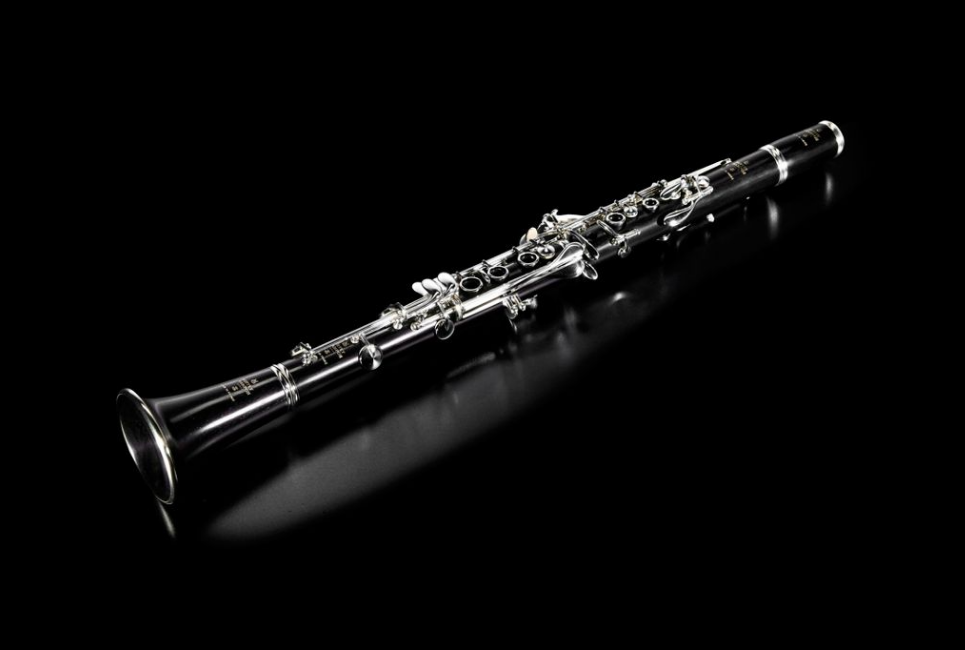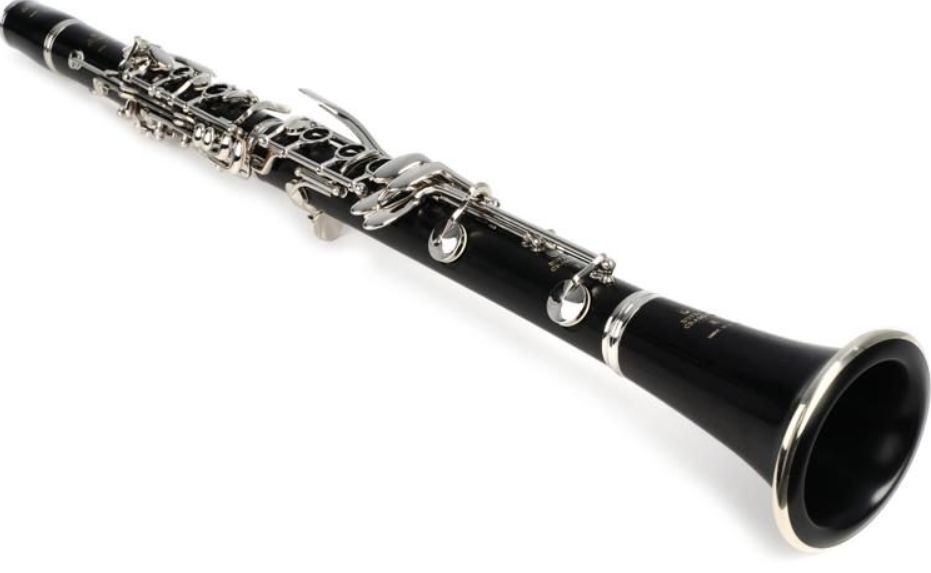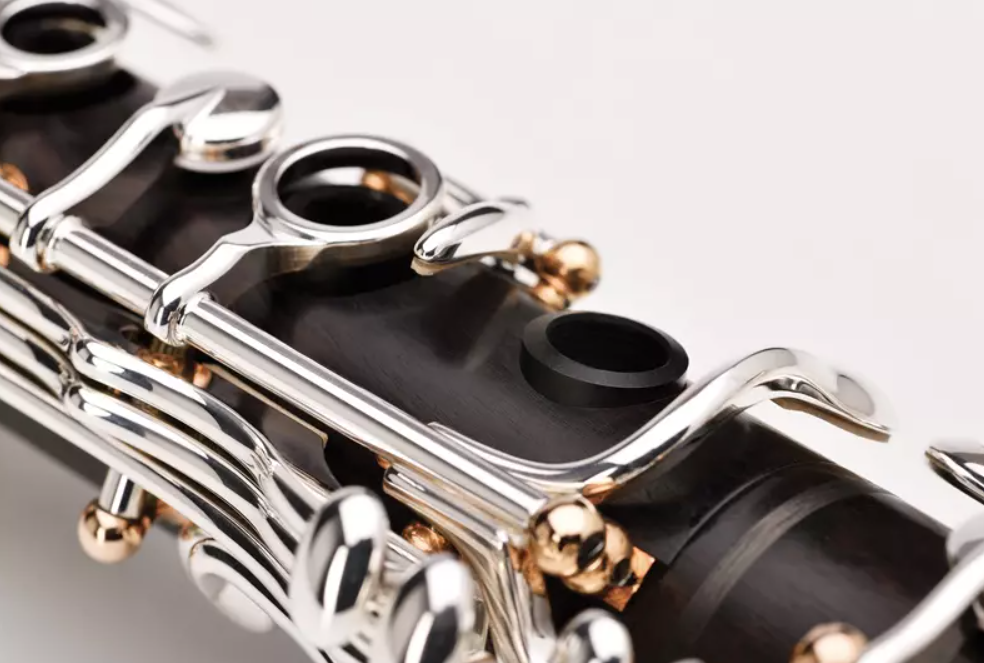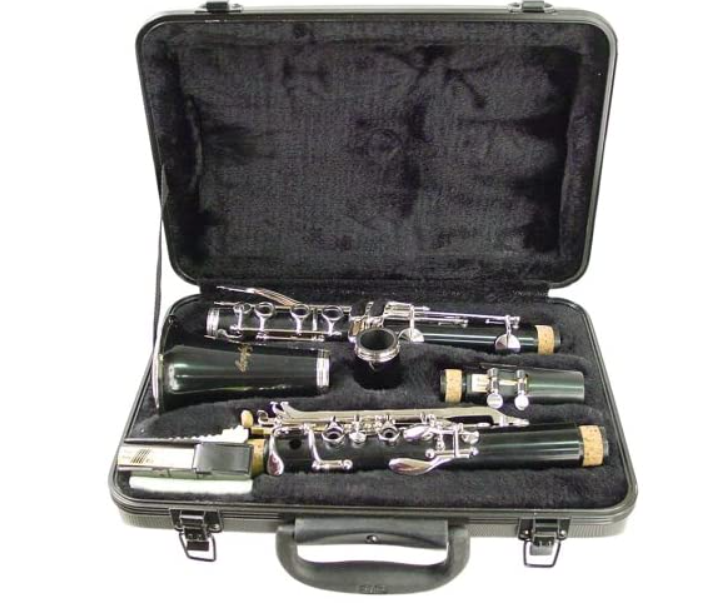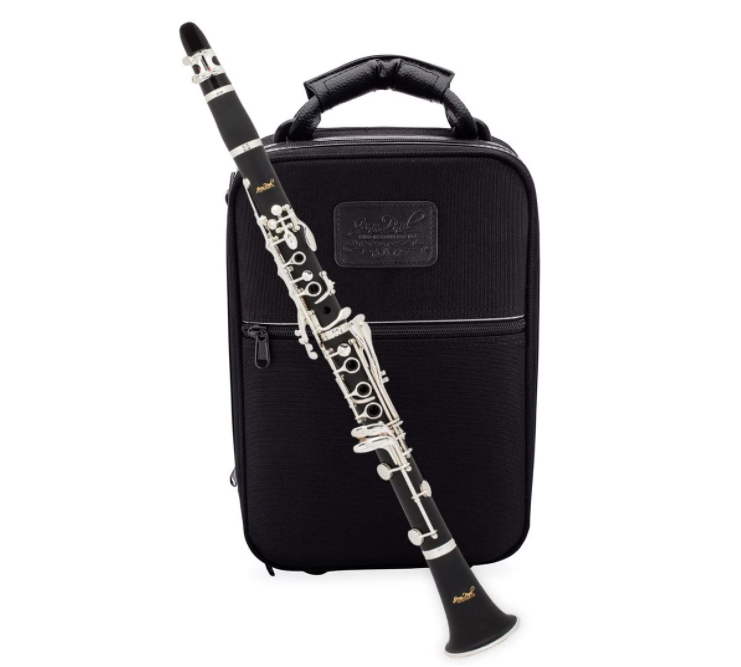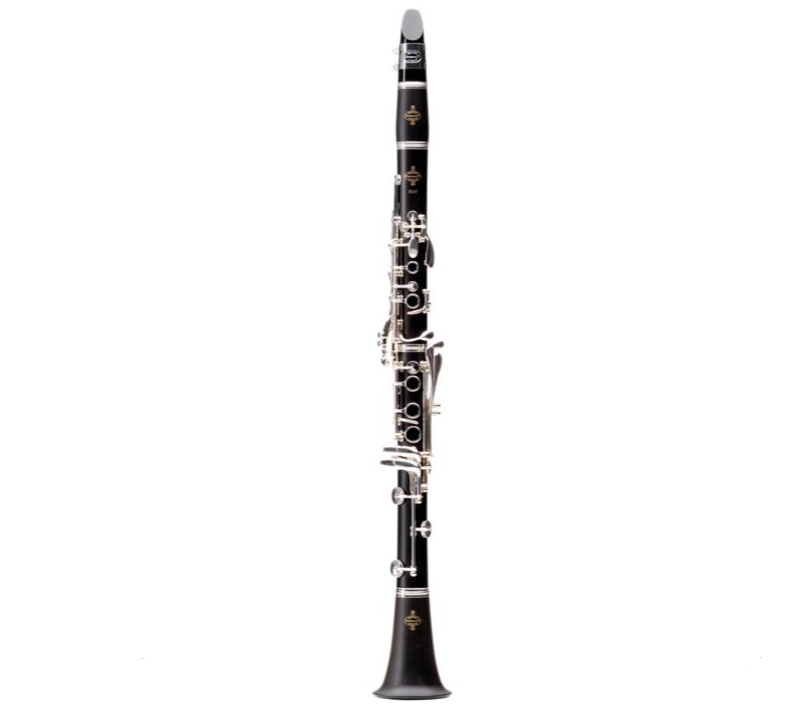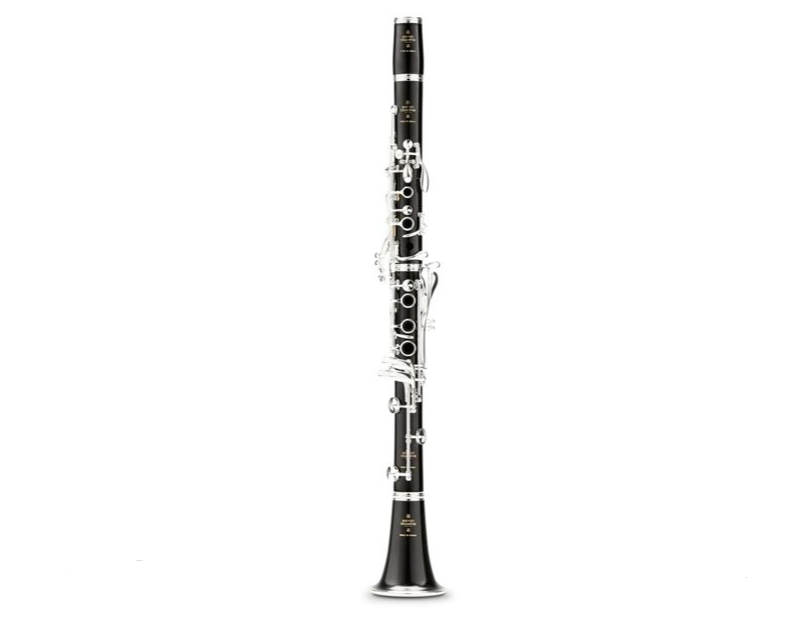- Mendini MV300: An Honest Breakdown and Review - April 6, 2022
- Cecilio Viola Review and Guide: 3 Violas, Which is the Best? - January 21, 2022
- Cecilio Electric Violin Review and Guide: A Silent Practice Violin! - January 20, 2022
I grew up learning to play the clarinet on my faithful Selmer CL300. My mom purchased this lovely clarinet from my school principal when I decided to play clarinet, and I quote, “have an actual instrument instead of drum sticks.” I’m not sure what I was thinking because I love percussion, but I picked up a clarinet and never looked back.
For the next decade, I took her to school with me every day, we practiced in the evenings (sometimes), and overall I had an amazing used clarinet for little money. When I decided to hang up my band hat after high school, my clarinet found a new home. A decade later, I’m here looking for a new clarinet, and sadly my faithful CL300 is no longer in production. I’m on the hunt for my next faithful musical companion.
A sneak peek into my top choices:
Student Pick: Jean Paul CL-400 for being an overall well-made clarinet at an affordable price point.
Overall Top Pick: Buffet Crampon R13 Professional is an amazing clarinet and one of the highest-rated amongst professional musicians.
Key Features to Look for and Avoid
Playing level
Your playing level will determine the type of clarinet you are looking for, the price point, and the materials you will seek. Student and professional clarinets have many differences. Professional clarinets are more nuanced and made out of more fragile materials. They require a lot of upkeep, so they are reserved for diligent, serious musicians.
Student clarinets are more durable but won’t allow for the same tone or skill level advancement. I recommend future-proofing your instrument as much as possible, similarly to purchasing a coat a size too big for a growing child. If you can afford to get the next step up from your current level, go for it. You won’t be able to appreciate all of the nuances now. Still, you will grow into your instrument just like the child will their coat and be able to appreciate all it brings you.
Materials and Construction: While I’ve seen and played clarinets made from various materials, including ebonite, a hard rubber. Traditionally you will find clarinets made from two types of material; ABS Plastic and hard tonewood. Traditionally this was African blackwood or Grenadilla wood, but due to a diminishing supply, other woods have been used like Honduran rosewood or cocobolo wood. In the past, wood clarinets have been made out of boxwood. Wood clarinets are warmer, more responsive, and overall sound better than their plastic counterparts.
Still, they are more susceptible to changes in temperature, humidity, and damage. They require extra care, which is why students typically use plastic clarinets. These guys can be dropped, left in cold or hot weather (for a little while at least), or even forgotten about for some time are still perfectly playable. When I first purchased my clarinet, it had been sitting in a closet for several years, but it was in perfect condition and approved by my band teacher before it was even in my hands. I wasn’t that great at caring for my clarinet, but it remained in excellent condition.
In contrast, my bandmate had a beautiful wooden clarinet that had been a family heirloom. Unfortunately, the clarinet hadn’t been well cared for before she received it, and she was never taught how to care for it, so it received the same amount of care as mine did. The body had started to crack significantly and was slowly becoming unplayable. I often wonder what happened to that clarinet; I hope it found a good home.
Bores
Bores are made from drilling a hole through a pyramid-shaped piece of seasoned wood or injecting melted plastic into molds under pressure. They are then reamed and polished into the correct shape. The bore determines the tune of the clarinet; it’s crucial that it is in good working condition. When you receive a clarinet, check the bores to ensure they are entirely smooth and free of cracks, knicks, or slivers of plastic or wood. Check both the outside and the inside of the bore to ensure there aren’t any hidden problems. A cracked bore makes a clarinet unplayable or unpleasant to listen to and requires repair, which can be costly. At the end of the barrels, you will find pieces of cork; these are the joints of the clarinet. Joints are crucial for ensuring the clarinet seals properly and stays together; make sure the cork is in good condition and not too dry, cracking, or peeling.
Keys & Pads:
Keys are typically nickel with a silver or nickel plating. Silver is the most ideal, and if you can find a wood clarinet with real silver keys, then you will want to take a second glance, even if it’s just for fun. Check all of the keys to make sure they aren’t bent or loose and spring back into place properly during playing. If the keys on a used clarinet are tarnished, it won’t affect its sound, just the aesthetics.
The metal composition of the keys will determine how fragile they are. On student instruments, you typically get lesser quality keys that require some care when assembling and disassembling your clarinet. Don’t hulk grip your instrument; handle it with care as if you were handling the most fragile, priceless item you can think of. The pads on the keys can be made from many different materials.
I’m partial to leather pads, but they are more expensive; fish skin pads are incredibly common, but there are pads made from all sorts of material, including cork and foam. You’ll likely find fish skin on most clarinet models; some professional models might come with leather. If you buy a cheaper or used clarinet, note any key sticking issues and check for a brow ring on the pads; this will indicate how well the previous owner cleaned the clarinet.
Barrel & Bell
Barrels are used primarily to tune the clarinet. Changing the position of the barrel on the joint will change the tune of the clarinet. Pulling the barrel up will tune the clarinet down, typically making the clarinet tune flat or bringing it up to pitch in the case of an already flat clarinet. Many student clarinets come with two barrels, a long and a short one. The short one is standard and will likely be what you use daily. The longer barrel functions the same way pulling the shorter barrel up does. The bell is the end part of the clarinet and helps project sound. Make sure both the barrel(s) and the bell aren’t cracked, as this will hinder the playability of the clarinet. Bells often get scratched due to their prevalence in marching band, while common makes sure these scratches aren’t too deep or on the inside of the bell.
Clarinet Mouthpiece and Ligature
If you buy a used instrument, purchase a new mouthpiece; never use someone’s old mouthpiece. It’s been in their mouth, a lot and that’s just disgusting. Honestly, my least favorite part of playing a woodwind or brass instrument is their ability to become absolutely disgusting. The mouthpiece is the primary culprit.
The smell of unwashed mouthpiece will never leave my memory. Treat yourself to a lovely new mouthpiece and thoroughly clean it after each practice to ensure it doesn’t start to smell and accumulate germs. I’m a fan of D’Addario Rico mouthpieces and their clarinet reeds or Yamaha mouthpieces. Check out our mouthpiece guide here! The ligature is the metal or plastic piece that goes around the mouthpiece and holds the reed in place. Make sure this piece is not bent and tightened properly. Replacing ligatures is pretty inexpensive. I like the plastic ones as they are sturdier and don’t bend like the thin metal ones.
Price: The price of a clarinet can vary from a hundred dollars to several thousand. The price you pay will also depend on if you are buying a new or used instrument.
Just trying it out: Get a cheaper clarinet, one for roughly $150 or less from Mendini or Hisonic will suffice if you just want to see if you like the instrument. If you find yourself playing daily and loving it six to eight months from now, then it’s time to upgrade to something nicer. So you can continue to advance and grow as a musician. If you can find a used Selmer, Jean Paul, Jupiter, or Yamaha in good working for roughly the same price or a little bit more, get it! It will give you way more room to grow if you like the instrument for the same price.
Serous Student: Purchase the best clarinet your budget can afford. I recommend spending roughly $300 on a clarinet, but if you can afford to spend more, you won’t regret it!
Advanced: Advancing students will want a clarinet made out of wood and allows them to grow as musicians. I recommend spending at least $800 on your instrument when you reach this level. As always, purchase the best that you can afford at the time.
Professional: Professionals have a lot of choices and, at this level, will know what they are looking for personally in a clarinet. Clarinetists can expect to spend $3,000-5,000 on their instrument, if not more. They will likely spend time testing various clarinets before settling on a specific one. Instruments chose the musician at this level.
Rented, Used, or New
Renting
Many students who start young are first introduced to the clarinet through school. Often schools have a contract with a local music store or music chain that will allow students to rent their instruments instead of buying them outright. A good rental agreement will enable students to set aside a portion of their rental payment every month towards purchasing a clarinet. Often, the accrued money will cover an amount of an instrument purchase but not the entire thing.
Occasionally, you can find rent-to-own plans that allow you the portion of your payment set aside to go towards the clarinet you are currently using. This is great for higher-quality clarinets, but you will pay more than if you had just bought it outright. A rental clarinet will likely be a student model ABS plastic from Selmer, Jupiter, or Yamaha. You will probably receive a used clarinet that has been serviced to be in good working order.
Pros
-
- Can return the instrument at any time
- Great for a brand new student who doesn’t want to commit to purchasing an instrument
- Allows you to purchase an instrument at a later time that may be better quality than what you could buy out of pocket.
- Repairs and servicing are often covered under the rental contract.
Cons
-
- Not all of your money will go towards an instrument purchase.
- Some rental contracts have a lot of hidden terms and conditions. These may limit how much-accrued money you can use towards your later instrument purchase. Occasionally I’ve seen some limiting the instrument option available to purchase.
- Always ends up costing more than buying outright.
- Can buy used for less
Used
If owning your own clarinet sounds more appealing to you than renting, but your budget is minimal, don’t worry. You can find a ton of used Selmer and Yamaha clarinets for sale on both eBay and Reverb. You can also find many used instruments on Facebook Marketplace and Craigslist; just make sure to practice meetup strategies when buying from strangers. I personally prefer to meet at or near the police station.
Buying a used clarinet in person is ideal, as you can test it to make sure it’s in excellent working order, visually see the clarinet up close for inspection and hear what it sounds like. I’d recommend going to a music store to purchase an instrument. You will likely pay a little more for professional knowledge and any adjustment they made before selling. Still, you can be sure you will walk away with a good clarinet. Of course, if buying used, purchase a new mouthpiece. Treat yourself!
Pros
-
- Own your own clarinet
- Can often find good deals on more expensive student models
- A great option for those on a budget
Cons
-
- Relying on sellers description if bought online
- Maybe need to service instrument
- Have to buy a new mouthpiece.
New
Buying a brand spanking new clarinet is one way to ensure you get a quality clarinet as long as you purchase a well-known and quality brand. Unlike orchestral string instruments, which become better with age, clarinets don’t come with that feature. Student models aren’t made out of materials that can change over time, and wood clarinets are made with very thick wood that doesn’t age in the same way thin spruce or maple would.
In the end, you will pay more than a used clarinet, but you will know that you are getting a clarinet that is ready to go out of the case. There aren’t any downsides to purchasing a new clarinet, especially if you are a serious musician. The joy you receive will far outweigh the cost of the instrument. Music soothes the soul and is a beautiful hobby; never be afraid to invest in it!
My Top Picks for New Clarinets
I choose these based on brand, reviews, and price to quality ratio.
Budget Beginner Clarinet
My pick for a budget student clarinet is the Hisonic Signature Series 2610. This clarinet immediately caught my eye because the case reminded me of my faithful Selmer clarinet. Thanks to the price to quality ratio and great reviews, it kept my attention. This is an exciting clarinet; it’s made out of ebonite, a hard rubber. Created as a synthetic version of ebony, this isn’t the first clarinet I’ve seen or played made out of ebonite. I don’t have a strong opinion either way on the material. It feels different from a plastic clarinet; it’s heavier, and the tone is a bit duller, but it gets the job done.
The pads are Prestini brand; I’m assuming their budget line. They are made in the USA but otherwise possess no notable qualities. The keys are nickel-plated silver. You’ll receive a case, mouthpiece, reed protector, cork grease, and clarinet swab. The case looks ridiculously small and doesn’t seem to have spaces for accessories or music. I’d upgrade to something with storage space.
Pros
-
-
- Very cheap
- Good quality for the price
- Made out of sturdy material great for young kids
- Comes with all of the basics
-
Cons
-
-
- Heavier than ABS plastic clarinets
- The case is very small
- Clarinet will need to be upgraded within a few years
- Thumb rest issues have been reported
-
Student Clarinet
If you are a serious student, I recommend the Jean Paul CL 400. Jean Paul clarinets aren’t as well-known as other popular student brands such as Selmer or Yamaha. Over the last few decades, they have made quite a name for themselves, slowly becoming one of the best beginner clarinet brands. In fact, this company reminds me of my all-time favorite orchestral string brand Fiddlershop. Family-owned and ironically also based out of Miami. They have been around since 1994, producing quality clarinets with a promise to stay affordable.
This clarinet is a step up to their lower-end models, the CL 300 and CL 350. This clarinet features an ABS plastic body that is stimulated to look like actual wood with silver-plated cupronickel keys fitted with fish skin pads to produce a warmer sound. This clarinet follows the standard 17 key Boehm system, so you’ll feel at home with any teacher. The package comes with a professional carrying case that has plenty of storage room for music and accessories, along with a bari mouthpiece, Rico H Ligature, Rico reed in size 2.5, perfect for students, cleaning cloth, swab, and cork grease.
This clarinet will become a faithful musical companion similar to my Selmer CL300. It will stay with you through your musical career and for some indefinitely as this will be all they need. Those with serious musical aspirations will keep this clarinet until they need to upgrade for practical purposes. This is usually students who choose a music-based career or wish to pursue education surrounding music. If you are like me and hang your band hat after graduation, then you may never need another clarinet.
Pros
-
-
- Great price for the quality
- Quality ABS Plastic Body with silver keys
- Comes with everything, including a reed
- Will stay a musical companion for many, many years to come
- Sharp looking clarinet and case
-
Cons
-
-
- Not as well known as Yamaha and Selmer
- No neck strap attachment on thumb rest
-
Advanced Clarinet
Advancing students who are seriously considering a professional music career will fall in love with the Buffet E12 Clarinet. This clarinet is expensive and would likely last a clarinetist well into their professional career. The buffet is one of the leaders in professional clarinets. They produce excellent high-quality clarinets that you can’t help but lust over.
The Buffet E12 is a fantastic intermediate clarinet that features a body made from carefully selected and stabilized grenadilla wood with silver-plated keys fitting with leather pads. This clarinet has a colorless varnish to protect against cracks and scratches, making it more durable for younger players. This is a lovely clarinet and honestly sounds out of its price range! This clarinet only comes with a case, mouthpiece, and ligature.
Pros
-
-
- Sounds more expensive than it is
- Features high-quality grenadilla wood
- Leather pads
- Varnished for extra protection
- Adjustable thumb rest with neck strap attachment
- Made in France and quality tested in Germany
-
Cons
-
-
- A little out of tune on some registers
-
Professional Clarinet
The Buffet Crampon R13 was created by Robert Carree in 1955 and has quickly become an industry standard for professionals. While you there are many professional clarinets out there, there aren’t many that are this widely acclaimed for their build, tone, and quality control. Buffet Crampon came to the market focused on professional clarinets first, and they do it very well. This clarinet features stained grenadilla wood with silver-plated nickel keys and bladder pads.
There is an adjustable thumb rest, but I didn’t see a neck strap loop on the instrument. The instrument comes with a leather case and an HB ligature but no mouthpiece. I assume that Buffet assumed most people would keep their old mouthpiece or find a new mouthpiece that suits their individual instruments playing style.
This is pretty standard for professional-level instruments. Please note that Buffet also sells greenline versions of their clarinets, made from mixing wood powder left from manufacturing grenadilla wood and epoxy resin. This material is strong against temperature and humidity changes but is more susceptible to damage from dropping or hitting something than wood. Otherwise, they are identical and sell for the same price.
Pros
-
-
- The industry standard in professional clarinets
- Premium stained grenadilla wood
- Silver-plated nickel keys with bladder pads
- Adjustable thumb rest
- .577″bore and 66mm barrel
-
Cons
-
-
- Extremely expensive
-
The Real MVP
I wanted to include a new, interesting, and somewhat peculiar clarinet from our friends at Buffet Crampon. If you are a seasoned clarinetist, then take a look at the BCXXI by Buffet Crampon, even if you have no intentions of purchasing it. This peculiar clarinet was created by Eric Baret, Michel Arrignon, Nicolas Bladeyrou, Martin Frost, and Paul Meyer.
By extending the lower joint of the Bb clarinet several centimeters, this clarinet produces a lower E-flat that makes the chalumeau register or lower register much more vibrant. Along with a shorter bell, the most revolutionary thing about this clarinet resonates from the body using the E/B and F/C notes to maintain accuracy and resonance.
Additionally, this clarinet features a third fingering of the middle register to create vibrations in the entire length of the clarinet and resonant sound. This also allows difficult passages in music to play easier. This clarinet was created to revolutionize the next century of music and bring the clarinet back to the forefront of everyone’s mind. This clarinet launched November 15th, 2021, and is currently very new to the market; check out a live stream with all sorts of information about this clarinet here!
Pros
-
-
- Revolutionary design
- Amazing response from professionals
- Made from natural grenadilla wood
- 19 silver-plated keys with GT and cork pads
- Comes with a harmonie ligature
- Comes with 65mm and 66mm barrels
-
Cons
-
-
- Incredibly expensive
- Very new to the market
-
FAQ
Answer: The clarinet is widely believed to have been developed by Johann Christoph Denner around the beginning of the 1700s. The chalumeau was the original version of the clarinet and reminded me a lot of a plastic recorder. Johann added the register key to the chalumeau, which allowed a higher register to be played. Over time, tone, seal, and playability were improved.
Answer: D’Addario Rico reeds and Vandoren are standard student reeds in various sizes. For beginners, I suggest starting with a size 2.0 or 2.5; as you gain muscle, lung capacity and adjust your embouchure, you will begin to move up in reed hardness. The harder the reed, the darker, heavier, and fuller the sound but the more mouth muscle control and strength you need to have.
Answer: When a musician places their mouth and lips around the mouthpiece to create an airtight seal and blows air in, the air is pushed past the reed causing it to vibrate rapidly. This makes a sound that vibrates through the bores, which produces a similar vibration as the reed. Out through the bell comes music or dying cats; it depends on who’s playing.
Final Thoughts
Choosing a suitable clarinet can feel like a daunting task, especially as a new player. Luckily we got you covered; whether you choose our budget, pick the Hisonic Signature Series 2610. Our serious student choice, the Jean Paul CL 400. Or decide to go all out with the Buffet Crampon R13; you’ll find yourself satisfied. I chose the Jean Paul CL 400 because it will fit my needs as a hobby musician while providing quality and longevity.
Looking for more interesting readings? Check Out:

